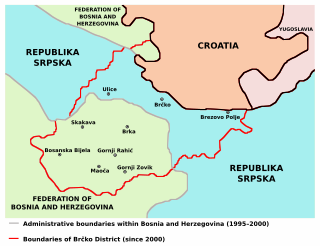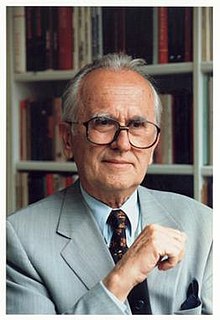 W
WThe Brčko corridor is a name used for a narrow strip of land along the southern bank of the Sava river that connected eastern and western part of the Republika Srpska from 1992 to 2000. It was created in 1992, after military Operation Corridor and was an important military and civil supply line for western parts of the Republika Srpska and Republic of Serbian Krajina during the Bosnian and Croatian war. After the Dayton Agreement was signed in 1995, the corridor remained within Republika Srpska, but subsequent international arbitration assigned this territory to a newly formed Brčko District, that became a territorial condominium shared between the Republika Srpska and the Federation of Bosnia and Herzegovina.
 W
WThe Croat–Bosniak War was a conflict between the Republic of Bosnia and Herzegovina and the self-proclaimed Croatian Republic of Herzeg-Bosnia, supported by Croatia, that lasted from 18 October 1992 to 23 February 1994. It is often referred to as a "war within a war" because it was part of the larger Bosnian War. In the beginning, Bosniaks and Croats fought in an alliance against the Yugoslav People's Army (JNA) and the Army of Republika Srpska (VRS). By the end of 1992, however, tensions between Bosniaks and Croats increased. The first armed incidents between them occurred in October 1992 in central Bosnia. Their military alliance held out until early 1993 when their cooperation fell apart and the two former allies engaged in open conflict.
 W
WThe Croatian Republic of Herzeg-Bosnia was an unrecognised geopolitical entity and proto-state in Bosnia and Herzegovina. It was proclaimed on 18 November 1991 under the name Croatian Community of Herzeg-Bosnia as a "political, cultural, economic and territorial whole" in the territory of Bosnia and Herzegovina.
 W
WBlaž Nikola Kraljević was a Bosnian Croat paramilitary leader who commanded the Croatian Defence Forces (HOS) during the Bosnian War. An immigrant to Australia, Kraljević joined the Croatian Revolutionary Brotherhood (HRB) upon his arrival there in 1967. During his return to Yugoslavia in January 1992 he was appointed by Dobroslav Paraga, leader of the Croatian Party of Rights (HSP), as leader of the HOS in Bosnia and Herzegovina.
 W
WThe Republic of Bosnia and Herzegovina was a state in Southeastern Europe, existing from 1992 to 1995. It is the direct legal predecessor to the modern-day state of Bosnia and Herzegovina.
 W
WThe Washington Agreement was a ceasefire agreement between the Republic of Bosnia and Herzegovina and the Croatian Republic of Herzeg-Bosnia, signed in Washington on 18 March 1994 and Vienna. It was signed by Bosnian Prime Minister Haris Silajdžić, Croatian Foreign Minister Mate Granić and President of Herzeg-Bosnia Krešimir Zubak. Under the agreement, the combined territory held by the Croat and Bosnian government forces was divided into ten autonomous cantons, establishing the Federation of Bosnia and Herzegovina. The cantonal system was selected to prevent dominance by one ethnic group over another.
 W
WThe Autonomous Province of Western Bosnia, or Western Bosnia, was a small unrecognised state that existed in the northwest of Bosnia and Herzegovina between 1993 and 1995. It consisted of the town of Velika Kladuša, its capital, as well as a few nearby villages. It was proclaimed as a result of secessionist politics by former Bosnian President Fikret Abdić against the central government of Alija Izetbegovic during the Bosnian War. For a short time in 1995, it was known as the Republic of Western Bosnia.
 W
WAdil Zulfikarpašić was a prominent Bosniak intellectual and politician who was the Vice President of the Republic of Bosnia and Herzegovina, during the Bosnian War of the 1990s, under Bosnia's first President Alija Izetbegović. After the war he retired from politics and opened the Bosniak Institute, a museum in Sarajevo focused on the Bosniak culture.